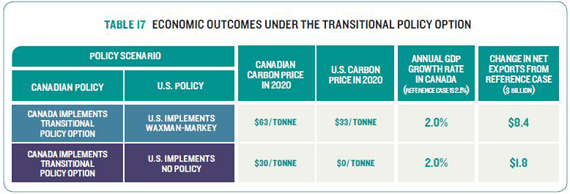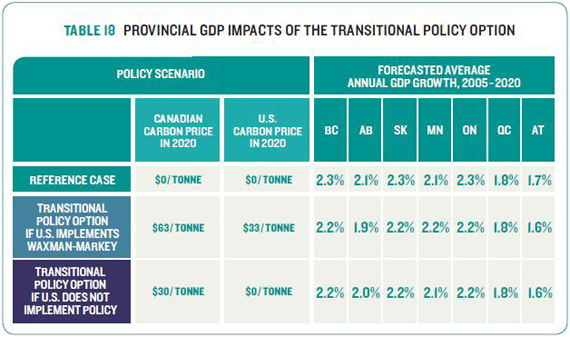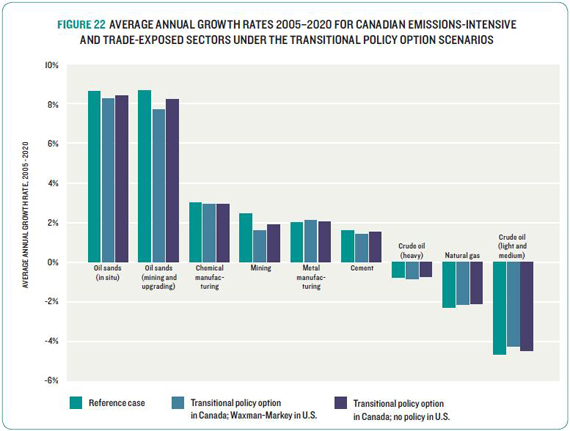Parallel Paths – 5.4 Economic Outcomes of the Transitional Policy Option
What would be the economic outcomes of this policy option? NRTEE modelling suggests that this approach successfully manages the trade-offs between different risks.
It successfully accommodates either action or inaction by the United States. Forecasted economic impacts are generally small and manageable. This is for two main reasons: first, the carbon price differential between Canada and the U.S. is limited and second, the absolute magnitude of the Canadian price is contained. As illustrated in Table 17, economic growth is healthy and not significantly reduced from the expected average growth rate in the absence of policy, of 2.1 % per year. To further moderate economic impacts, the maximum price differential could be phased in over time.

The Transitional Policy Option moderates regional impacts both by limiting the U.S.- Canada carbon price differential and through the associated revenue recycling approach. Recall that the contingent pricing policy is part of a national, economy-wide cap-and trade system designed to establish and communicate the price signal. The cap-and-trade system will generate revenue through the auctioning of carbon permits by 2020. Based on NRTEE modelling revenue recycling to corporate income tax reductions clearly lessens the economic impact on capital-intensive industries, such as oil and gas, which are principally located in Alberta and Saskatchewan. As shown in Table 18, Alberta still experiences greater economic impacts than other provinces but nevertheless experiences substantial economic growth due to this revenue recycling. Growth in all regions and sectors is still healthy in 2020. This approach helps to meet objections about wealth redistribution from carbon-intensive jurisdictions arising through climate change policy.

The limited price differential reduces the sector-level impacts on trade- and carbon-exposed sectors, as illustrated in Figure 22. Average annual growth in all vulnerable sectors is only slightly reduced from the reference case, and remains positive in all sectors expected to grow under the reference case. Again, some of these trade impacts are the results of reducing emissions in emissions-intensive sectors in Canada and consequent reduced production; these costs cannot be avoided if Canada is to achieve long-term reductions.

























